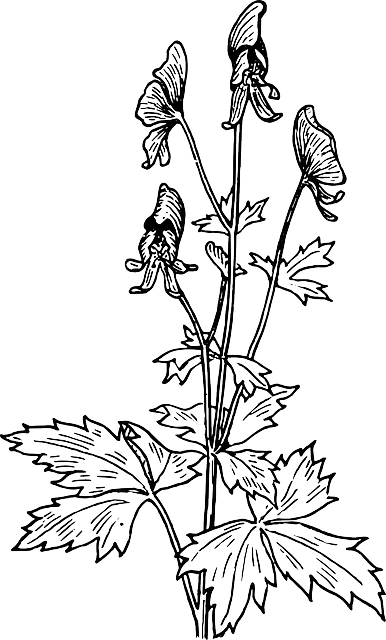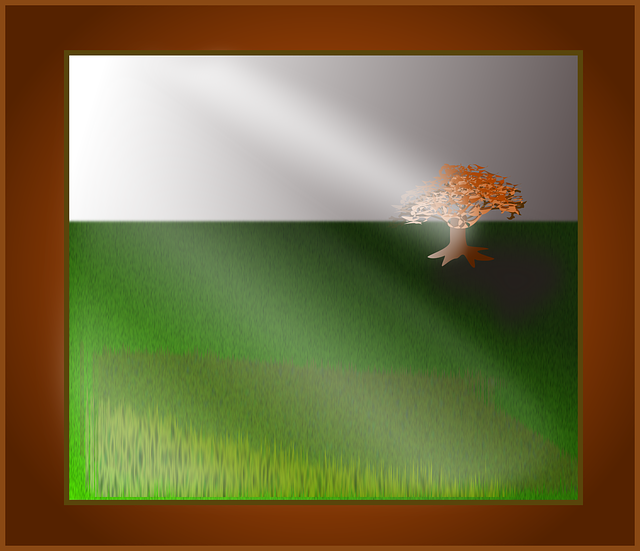اللغات الأسترو-آسيوية
| Austroasiatic | |
|---|---|
| Mon–Khmer | |
| التوزيع الجغرافي: |
South and Southeast Asia |
| التبويب اللغوي: | One of the world's primary language families |
| اللغة الأولية: | Proto-Austroasiatic |
| الأقسام: |
|
| ISO 639-5: | aav |
| Glottolog: | aust1305 |
|
Austroasiatic languages
| |
اللغات الأستروآسيوية (Austroasiatic؛ //، وتُعهد أيضاً بإسم مون–خمير //, are a large language family of Mainland Southeast Asia, also scattered throughout India, Bangladesh, Nepal and the southern border of China, with around 117 million speakers. The name Austroasiatic comes from a combination of the Latin words for "South" and "Asia", hence "South Asia". Of these languages, only Vietnamese, Khmer, and Mon have a long-established recorded history, and only Vietnamese and Khmer have official status as modern national languages (in Vietnam and Cambodia, respectively). In Myanmar, the Wa language is the de facto official language of Wa State. Santali is recognized as a regional language of India. The rest of the languages are spoken by minority groups and have no official status.
Ethnologue identifies 168 Austroasiatic languages. These form thirteen established families (plus perhaps Shompen, which is poorly attested, as a fourteenth), which have traditionally been grouped into two, as Mon–Khmer and Munda. However, one recent classification posits three groups (Munda, Nuclear Mon-Khmer and Khasi–Khmuic) while another has abandoned Mon–Khmer as a taxon altogether, making it synonymous with the larger family.
Austroasiatic languages have a disjunct distribution across India, Bangladesh, Nepal and Southeast Asia, separated by regions where other languages are spoken. They appear to be the extant autochthonous languages of Southeast Asia (if Andaman islands are not included), with the neighboring Indo-Aryan, Kra–Dai, Hmong-Mien, Dravidian, Austronesian, and Sino-Tibetan languages being the result of later migrations.
اللغة الأولية
Much work has been done on the reconstruction of Proto-Mon–Khmer in Harry L. Shorto's Mon–Khmer Comparative Dictionary. Little work has been done on the Munda languages, which are not well documented. With their demotion from a primary branch, Proto-Mon–Khmer becomes synonymous with Proto-Austroasiatic.
Paul Sidwell (2005) reconstructs the consonant inventory of Proto-Mon–Khmer as follows:
| *p | *t | *c | *k | *ʔ |
| *b | *d | *ɟ | *ɡ | |
| *ɓ | *ɗ | *ʄ | ||
| *m | *n | *ɲ | *ŋ | |
| *w | *l, *r | *j | ||
| *s | *h |
التبويب الداخلي
ديفلوث (1974)
Diffloth's widely cited original classification, now abandoned by Diffloth himself, is used in Encyclopædia Britannica and—except for the breakup of Southern Mon–Khmer—in Ethnologue.
-
موندا
- North Munda
- Korku
- Kherwarian
- South Munda
- Kharia–Juang
- Koraput Munda
- North Munda
- Mon–Khmer
- Eastern Mon–Khmer
- Khmer (Cambodian)
- Pearic
- Bahnaric
- Katuic
- Vietic (includes Vietnamese)
- Northern Mon–Khmer
- Khasi (Meghalaya, India)
- Palaungic
- Khmuic
- Southern Mon–Khmer
- Mon
- Aslian (Malaya)
- Nicobarese (جزر نيكوبار)
- Eastern Mon–Khmer
پيروس (2004)
Peiros is a lexicostatistic classification, based on percentages of shared vocabulary. This means that languages can appear to be more distantly related than they actually are due to language contact. Indeed, when Sidwell (2009) replicated Peiros's study with languages known well enough to account for loans, he did not find the internal (branching) structure below.
- Nicobarese
- Munda–Khmer
- Munda
- Mon–Khmer
- Khasi
- Nuclear Mon–Khmer
- Mangic (Mang + Palyu) (perhaps in Northern MK)
- Vietic (perhaps in Northern MK)
- Northern Mon–Khmer
- Palaungic
- Khmuic
- Central Mon–Khmer
- Khmer dialects
- Pearic
- Asli-Bahnaric
- Aslian
- Mon–Bahnaric
- Monic
- Katu–Bahnaric
- Katuic
- Bahnaric
ديفلوث (2005)
Diffloth compares reconstructions of various clades, and attempts to classify them based on shared innovations, though like other classifications the evidence has not been published. As a schematic, we have:
| Austro ‑ Asiatic |
|
|||||||||||||||||||||||||||||||||||||||||||||||||||||||||||||||||||||||||||||||||||||||||||||
أوبتفصيل أكثر،
- Munda languages (الهند)
-
- Koraput:سبعة languages
- Core Munda languages
-
- Kharian–Juang: 2 languages
- North Munda languages
- Korku
- Kherwarian: 12 languages
- Khasi–Khmuic languages (Northern Mon–Khmer)
-
- Khasian: ثلاثة languages of north eastern India and adjacent region of Bangladesh
- Palaungo-Khmuic languages
- Khmuic: 13 languages of Laos and Thailand
-
- Palaungo-Pakanic languages
- Pakanic or Palyu: أربعة orخمسة languages of southern China and Vietnam
- Palaungic: 21 languages of Burma, southern China, and Thailand
-
- Nuclear Mon–Khmer languages
- Khmero-Vietic languages (Eastern Mon–Khmer)
-
- Vieto-Katuic languages ?
- Vietic:عشرة languages of Vietnam and Laos, including the Vietnamese language, which has the most speakers of any Austroasiatic language.
- Katuic: 19 languages of Laos, Vietnam, and Thailand.
-
-
- Khmero-Bahnaric languages
-
- Bahnaric: 40 languages of Vietnam, Laos, and Cambodia.
- Khmeric languages
- The Khmer dialects of Cambodia, Thailand, and Vietnam.
- Pearic:ستة languages of Cambodia.
-
-
- Nico-Monic languages (Southern Mon–Khmer)
- Nicobarese:ستة languages of the Nicobar Islands, a territory of India.
-
- Asli-Monic languages
- Aslian: 19 languages of peninsular Malaysia and Thailand.
- Monic: 2 languages, the Mon language of Burma and the Nyahkur language of Thailand.
-
Sidwell (2009, 2011)
|
Austroasiatic: Mon–Khmer
|
|
|||||||||||||||||||||||||||||||||||||||||||||
نظم الكتابة
Other than Latin-based alphabets, many Austroasiatic languages are written with the Khmer, Thai, Lao, and Burmese alphabets. Vietnamese divergently had an indigenous script based on Chinese logographic writing. This has since been supplanted by the Latin alphabet in the 20th century. The following are examples of past-used alphabets or current alphabets of Austroasiatic languages.
- Chữ Nôm
- Khmer alphabet
- Khom script (used for a short period in the early 20th century for indigenous languages in Laos)
- Mon script
- Mundari Bani (Mundari alphabet)
- Ol Chiki alphabet (Santali alphabet)
- Pahawh Hmong was once used to write Khmu, under the name "Pahawh Khmu"
- Sorang Sompeng alphabet (Sora alphabet)
- Tai Le (Palaung, Blang)
- Tai Tham (Blang)
- Warang Citi (Ho alphabet)
Austroasiatic migrations
According to Chaubey et al., "Austro-Asiatic speakers in India today are derived from dispersal from Southeast Asia, followed by extensive sex-specific admixture with local Indian populations." According to Riccio et al., the Munda people are likely descended from Austroasiatic migrants from southeast Asia.
According to Zhang et al., Austroasiatic migrations from southeast Asia into India took place after the last Glacial maximum, circa 10,000 years ago. Arunkumar et al. suggest Austroasiatic migrations from southeast Asia occurred into northeast India 5.2 ± 0.6 kya and into East India 4.3 ± 0.2 kya.
انظر أيضاً
- لغات موندا
- اللغات الأسترية
ملاحظات
- ^ Sometimes also as Austro-Asiatic أوAustroasian
المراجع
- ^ نطقب:Glottolog
- ^ Bradley (2012) notes, MK in the wider sense including the Munda languages of eastern South Asia is also known as Austroasiatic.
- ^ "Austroasiatic". www.languagesgulper.com (in الإنجليزية). Retrieved 15 October 2017.
- ^ Diffloth 2005
- ^ Sidwell 2009
-
^ خطأ استشهاد: وسم
<ref>غير سليم؛ لا نص تم توفيره للمراجع المسماةSidwellBlench2011 - ^ Sidwell (2005) casts doubt on Diffloth's Vieto-Katuic hypothesis, saying that the evidence is ambiguous, and that it is not clear where Katuic belongs in the family.
- ^ "Vietnamese Chu Nom script". Omniglot.com. Retrieved 11 March 2012.
- ^ "Khmer/Cambodian alphabet, pronunciation and language". Omniglot.com. Retrieved 11 March 2012.
- ^ "Santali alphabet, pronunciation and language". Omniglot.com. Retrieved 11 March 2012.
- ^ "Sorang Sompeng script". Omniglot.com. 18 June 1936. Retrieved 11 March 2012.
- ^ Everson, Michael (19 April 2012). "N4259: Final proposal for encoding the Warang Citi script in the SMP of the UCS" (PDF). Retrieved 20 August 2016.
- ^ Chaubey et al. 2010, p. 1013.
- ^ Riccio, M. E.; et al. (2011). "The Austroasiatic Munda population from India and Its enigmatic origin: a HLA diversity study". Human Biology. 83 (3): 405–435. doi:10.3378/027.083.0306. PMID 21740156.
- ^ The Language Gulper,
- ^ Zhang 2015.
- ^ Arunkumar, G.; et al. (2015). "A late Neolithic expansion of Y chromosomal haplogroup O2a1-M95 from east to west". Journal of Systematics and Evolution. 53 (6): 546–560. doi:10.1111/jse.12147.
المصادر
- Adams, K. L. (1989). Systems of numeral classification in the Mon–Khmer, Nicobarese and Aslian subfamilies of Austroasiatic. Canberra, A.C.T., Australia: Dept. of Linguistics, Research School of Pacific Studies, Australian National University. ISBN 0-85883-373-5
- Alves, Mark J. (2014). "Mon-Khmer". In Rochelle Lieber; Pavel Stekauer (eds.). The Oxford Handbook of Derivational Morphology. Oxford: Oxford University Press. pp. 520–544.
- Alves, Mark J. (2015). Morphological functions among Mon-Khmer languages: beyond the basics. In N. J. Enfield & Bernard Comrie (eds.), Languages of Mainland Southeast Asia: the state of the art. Berlin: de Gruyter Mouton, 531–557.
- Bradley, David (2012). "Languages and Language Families in China", in Rint Sybesma (ed.), Encyclopedia of Chinese Language and Linguistics.
- Chakrabarti, Byomkes. (1994). A Comparative Study of Santali and Bengali.
- Chaubey, G.; Metspalu, M.; Choi, Y.; Magi, R.; Romero, I. G.; Soares, P.; van Oven, M.; Behar, D. M.; et al. (2010), "Population Genetic Structure in Indian Austroasiatic Speakers: The Role of Landscape Barriers and Sex-Specific Admixture", Mol Biol Evol 28 (2): 1013–1024, doi:, PMID 20978040
- Diffloth, Gérard (2005). "The contribution of linguistic palaeontology and Austro-Asiatic". in Laurent Sagart, Roger Blench and Alicia Sanchez-Mazas, eds. The Peopling of East Asia: Putting Together Archaeology, Linguistics and Genetics. 77–80. London: Routledge Curzon. ISBN 0-415-32242-1
- Filbeck, D. (1978). T'in: a historical study. Pacific linguistics, no. 49. Canberra: Dept. of Linguistics, Research School of Pacific Studies, Australian National University. ISBN 0-85883-172-4
- Hemeling, K. (1907). Die Nanking Kuanhua. (German language)
- Jenny, Mathias and Paul Sidwell, eds (2015). The Handbook of Austroasiatic Languages. Leiden: Brill.
- Peck, B. M., Comp. (1988). An Enumerative Bibliography of South Asian Language Dictionaries.
- Peiros, Ilia. 1998. Comparative Linguistics in Southeast Asia. Pacific Linguistics Series C, No. 142. Canberra: Australian National University.
- Shorto, Harry L. edited by Sidwell, Paul, Cooper, Doug and Bauer, Christian (2006). A Mon–Khmer comparative dictionary. Canberra: Australian National University. Pacific Linguistics. ISBN 0-85883-570-3
- Shorto, H. L. Bibliographies of Mon–Khmer and Tai Linguistics. London oriental bibliographies, v. 2. London: Oxford University Press, 1963.
- Sidwell, Paul (2005). "Proto-Katuic Phonology and the Sub-grouping of Mon–Khmer Languages". In Sidwell, ed., SEALSXV: papers from the 15th meeting of the Southeast Asian Linguistic Society.
- Sidwell, Paul (2009). . LINCOM studies in Asian linguistics. 76. Munich: Lincom Europa. ISBN .
- Sidwell, Paul (2010). "The Austroasiatic central riverine hypothesis" (PDF). Journal of Language Relationship. 4: 117–134.
- Zide, Norman H., and Milton E. Barker. (1966) Studies in Comparative Austroasiatic Linguistics, The Hague: Mouton (Indo-Iranian monographs, v. 5.).
- Zhang (2015), "Y-chromosome diversity suggests southern origin and Paleolithic backwave migration of Austro-Asiatic speakers from eastern Asia to the Indian subcontinent", Scientific Reports 5: 1548, doi:, PMID 26482917, Bibcode: 2015NatSR...515486Z
Further reading
- Mann, Noel, Wendy Smith and Eva Ujlakyova. 2009. Linguistic clusters of Mainland Southeast Asia: an overview of the language families. Chiang Mai: Payap University.
- Mason, Francis (1854). "The Talaing Language". Journal of the American Oriental Society. 4: 277, 279–288. JSTOR 592280.
- Sidwell, Paul (2013). "Issues in Austroasiatic Classification". Language and Linguistics Compass. 7 (8): 437–457. doi:10.1111/lnc3.12038.
- Sidwell, Paul. 2016. Bibliography of Austroasiatic linguistics and related resources.
وصلات خارجية
- Swadesh lists for Austro-Asiatic languages (from Wiktionary's wikt:Appendix:Swadesh lists Swadesh-list appendix)
- Austro-Asiatic at the Linguist List MultiTree Project (not functional as of 2014): Genealogical trees attributed to Sebeok 1942, Pinnow 1959, Diffloth 2005, and Matisoff 2006
- Mon–Khmer.com: Lectures by Paul Sidwell
- Mon–Khmer Languages Project at SEAlang
- Munda Languages Project at SEAlang
- http://projekt.ht.lu.se/rwaai RWAAI (Repository and Workspace for Austroasiatic Intangible Heritage)
- http://hdl.handle.net/10050/00-0000-0000-0003-66A4-2@view RWAAI Digital Archive
- http://lacito.vjf.cnrs.fr/pangloss/languages/AA_Ferlus_en.php Michel Ferlus's recordings of Mon-Khmer (Austroasiatic) languages (CNRS)
نطقب:Austroasiatic languages
















